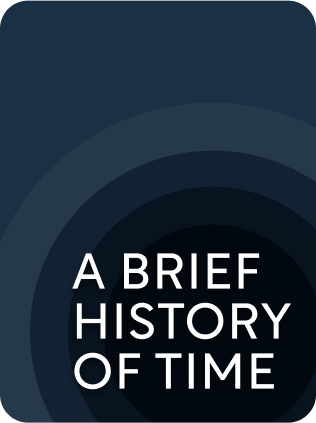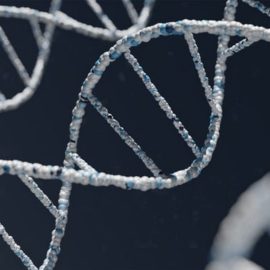

This article is an excerpt from the Shortform book guide to "A Brief History of Time" by Stephen Hawking. Shortform has the world's best summaries and analyses of books you should be reading.
Like this article? Sign up for a free trial here .
What are the arrows of time? How is the direction of time defined?
You probably have an intuitive idea of what it means to move backwards versus forwards in time, but formally defining the direction of time is more difficult. Although various views on the direction of time exist, Stephen Hawking identifies three distinct arrows of time: thermodynamic, psychological, and cosmological.
Read on to learn about the arrows of time from various perspectives.
The Arrows of Time
Hawking defines the “arrows of time,” providing three different ways to distinguish between going forward and backward in time:
- The thermodynamic arrow of time is based on the second law of thermodynamics, which states that the total entropy of the universe (or any closed system) cannot decrease. (Recall that entropy is a measure of disorder.) Thus, time moves forward in the direction that the entropy of the universe increases.
- Hawking defines the psychological arrow of time as the direction that humans perceive time progressing: You remember the past and have to wait and see what the future will bring.
- Hawking defines the cosmological arrow of time based on the expansion of the universe: Time moves forward as the universe expands and backward as it contracts.
| Additional Arrows of Time Others have proposed a number of additional arrows of time besides the three that Hawking defines: The Radiation Arrow is based on how waves travel. Specifically, waves (like light or sound) always radiate away from their source. So time moves forward as waves radiate outward, and backward as waves converge toward their source. The Cause-and-Effect Arrow is defined by the principle that when one event causes another, the cause always comes before the effect. The Nuclear Arrow is defined based on the decay rates of subatomic particles. Specifically, some unstable particles have slightly different decay rates than their corresponding antiparticles. This difference can serve as a reference to mark the direction in which time progresses. |
Time in Thermodynamics and Human Perception
Hawking argues that the psychological arrow of time necessarily points the same way as the thermodynamic arrow because the human brain obeys the second law of thermodynamics.
Drawing an analogy between human memory and computer memory, he points out that the process of storing information in computer memory generates entropy, and asserts that human learning also generates entropy. Since storing memories in your brain increases the entropy of the universe, your memories all point back to times when the entropy of the universe was lower.
(Shortform note: In A Mind for Numbers, Barbara Oakley explains that the neurological processes involved in learning and remembering information generate toxins that are flushed out of your brain every night while you sleep. Oakley uses this to illustrate the importance of sleep for learning, but these toxins could also be used as a measure of the amount of entropy generated in the learning process, since they are high-entropy molecules that are periodically purged from the system.)
Time in Cosmology
Hawking reports that when he formulated the first version of his “no-boundary” model of cosmology, he thought that the cosmological arrow of time would also point the same direction as the thermodynamic and psychological arrows. Thus, when the universe stopped expanding and started contracting, its history would replay in reverse. Any people alive during the contraction phase would remember the future instead of the past, since entropy would be decreasing.
However, as Hawking refined his model, he realized that this concept was wrong. Actually, the entropy of the universe would continue to increase during the contracting phase as well, so the thermodynamic and psychological arrows of time would continue to point the same way as during cosmic expansion. If you lived during the contracting phase, you would still remember the past and not the future.
That said, Hawking also notes that humans will not be around during the contracting phase, because current models predict the universe will succumb to a “heat death” before the universe stops expanding and begins contracting. A “heat death” basically means a state where all energy sources have been exhausted, to the point where it is no longer possible for complex lifeforms to survive.
| The Cosmological Time Debate Physicist Richard Muller would probably disagree with Hawking’s conclusion that time would continue to move forward in a contracting universe, since Muller argues that the expansion of the universe is what fundamentally defines the arrow of time. According to Muller, this is because time is growing, just like space. Muller points out that, according to general relativity, the universe is not merely expanding in space, but rather space itself is expanding. It has been expanding ever since the big bang, when it came into being at a singularity. And it isn’t just space that’s expanding: As spacetime expands, time is expanding along with space. The expansion of the time dimension manifests itself as the progression of time. Muller dismisses the thermodynamic arrow of time. If increasing entropy defined the progression of time, then traveling back in time would be as easy as reducing the entropy around you. But this is not what we observe. Muller concedes that the total entropy of the universe increases as time progresses, but points out that the local entropy of regions within the universe can increase or decrease at any time. (As we discussed earlier, to store information in memory, you have to decrease the entropy of the memory chip, albeit by creating more entropy elsewhere.) Muller doesn’t specifically discuss how time would be different in a contracting universe, probably because it is now widely accepted that the expansion of the universe is accelerating, and so it’s not expected to ever contract. However, we can infer from his definition of time that if spacetime stopped expanding and started contracting, the direction of time would reverse. |

———End of Preview———
Like what you just read? Read the rest of the world's best book summary and analysis of Stephen Hawking's "A Brief History of Time" at Shortform .
Here's what you'll find in our full A Brief History of Time summary :
- The search for a theory that explains the history and evolution of our universe
- Stephen Hawking's discussions about time, space, dimensions, and quantum theory
- How time travel would theoretically work






